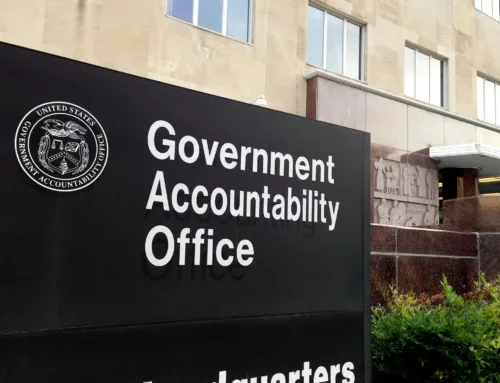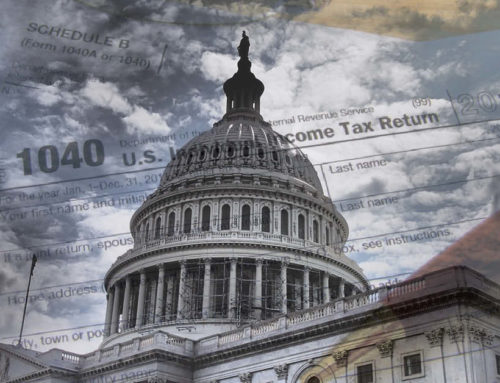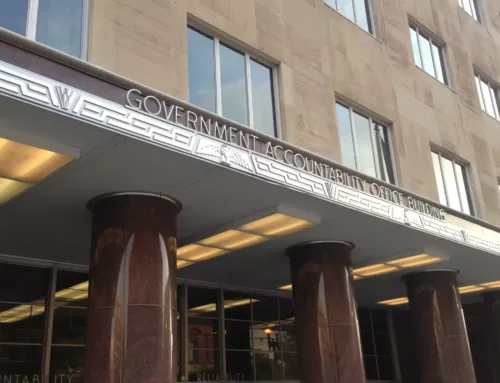In this episode, TCS president Steve Ellis talks with senior policy analyst Joshua Sewell to unpack the details of HR22, the Congressional Budget Justification Transparency Act of 2021 on the American Rescue Plan Act of 2021. Listen below, or scroll down further for the transcript.
Steve Ellis:
Welcome to all American taxpayers seeking common sense, you’ve made it to the right place. For over 25 years, TCS, that’s Taxpayers for Common Sense, has served as an independent, non-partisan budget watchdog group based in Washington, DC. We believe in fiscal policy for America that is based on facts, and our team at TCS works to ensure that taxpayer dollars are spent responsibly, and that our government operates within its means. It’s literally our mission. We believe in transparency and accountability, so that no matter where you are on the political spectrum, no one wants to see their taxpayer dollars wasted.
So you won’t be surprised that, on today’s show, we’re focusing on transparency and accountability in bills that are now moving through Congress. One I’m sure you’ve heard of, and that’s the COVID-19 Relief Package, otherwise known as the American Relief Plan. And one you may not have, a bill that would require budget justifications and appropriations request of the agencies be made publicly available.
So let’s start with the latter, and here to get us up to speed and unpack the details of HR22, the Congressional Budget Justification Transparency Act of 2021, is TCS Senior Policy Analyst Josh Sewell. Welcome to the podcast, Josh.
Josh Sewell:
Thanks, Steve. I’m very glad we’re tackling this topic today.
Steve Ellis:
Just so you know, Josh manages research and outreach on issues, most notably leading our agriculture team, but also issues dealing with the Army Corp of Engineers, and general government transparency here at Taxpayers for Common Sense. This bill, and all that it hopes to accomplish, is right up your alley.
Let’s start with the basics. HR22 has already passed the House back in January, and so it’s ready for consideration by the Senate. Tell our audience what a budget justification is, and why it’s so important to all of us, especially those with green eyeshades on?
Josh Sewell:
At a basic level, budget justification is simply a document where someone explains each part of their budget. So they’re using plain language, they explain what often is just a bunch of numbers. In the Federal government, every agency is supposed to produce a budget justification as part of the President’s annual budget request. It gives you details on how the agency plans to spend the funds they’re requesting, it also has some numbers on last year’s performance. They project future spending, and provide an amount of actual spending from last year.
Now, there’s three main reasons why budget justifications are important. First, they are critical for making sense of the Federal budget. Often times, if you look at the President’s budget request, it’s simply a number and that doesn’t tell you much. So take an agency like the Army Corp of Engineers, civil works division. This is the lead agency for building or maintaining Federal flooding control projects, keeping rivers navigable, and ports deep enough to operate. In the President’s budget, there are hundreds of projects to be done by the Corp, each is just a number. $93.6 million, Savannah Harbor Expansion, Georgia. That’s it. It doesn’t tell you much.
So if you want to know anything, you have to go to the Corp’s budget justification. In there, there’s a section by section for each project. In the Corp’s budget justification, Savannah Harbor Expansion has eight pages. This budget sheet gives you the details, it puts that $93 million in perspective. Where it’s located, what they’re going to do with the funds, each separate element of the project, when was the project originally authorized, what has been spent, projected total costs. You name it, most of what you need is in there. The great thing about the Corp, and some of these other infrastructure projects, they even have maps and diagrams of the project. What you end up having is most of the elements you need to follow the money, while also following in real time on Google Maps.
A second reason justifications are so important is they shed light on assumptions in the budget. Budget requests are messaging documents. The President doesn’t write bills, Congress does. So the President can often make policy suggestions in a budget, but he doesn’t get to implement it without the help of Congress. What should end up happening is you don’t actually have real numbers that are going to happen in real life. So for example, every year in the Trump and Obama budgets, they proposed to the Federal Crop Insurance program. They would have saved billions of dollars, they would have been some great reforms. But, Congress writes the laws not the President. You may look at the budget and say, “I agree with this, this is going to be some great policies,” but it’s not really what’s going to happen. So the budget justifications really cut through the spin, and that’s where the rubber meets the road in actually knowing what’s going to happen.
The third reason justifications are important is, for certain agencies, they are great for insomnia. I love budget justifications, but not every agency’s is as good as the others. For your kids, maybe for yourself, they’re a good way to get to sleep. Full disclosure, I’ve never gotten through a Forest Service justification. By page 10 or 12, I’m just sawing logs.
Steve Ellis:
Add in some humor to Budget Watchdog AF, I like it. I like it.
Josh, digging more into this, you mentioned the Forest Service, you mentioned Department of Agriculture, you mentioned the Corp of Engineers. Uniformity is another crucial element of transparency when it comes to tracking appropriations from year to year, and that means being able to compare apples-to-apples across the executive branch. How does this Congressional Budget Justification Transparency Act make that possible?
Well first of all, it’s going to let us find those apples. Unfortunately right now, it can be more of a treasure hunt when you’re looking for agency justifications. Each agency publishes their justification in their own format, on their own website, without uniformity. Sometimes they come out the day the budget is released, other times it takes weeks, so you really have to root around to find them. It’s less an apples-to-apples and more a truffles-to-truffles since you’ve got to really root for them.
Now, this act would solve that by first requiring each agency to publish it’s justification online, in a readable format. Pretty simple, kind of strange we still have to mandate that in 2021, but here we are.
Another important part is that the White House Office of Management and Budget, which is in charge of creating the budget request every year, would create a list of data, at least monthly, of each agency required to produce a justification, the date that was produced, and a link to it. So creating a centralized database of sorts, that accessible to the public, sortable, downloadable, that everyone can access to see where all these justifications are. This centralized accounting of what is out there is probably the best part of this bill, because it starts to end that treasure hunt and just give us access to these justifications.
Steve Ellis:
Well Josh, if you forgive me to extend the analogy a little bit more, it’s no more bobbing for apples at agency websites, but it is actually a baked apple pie, right there for us budget nerds to dig in and to really understand.
Josh Sewell:
There’s nothing more American than apple pie.
Steve Ellis:
Exactly. Or, budget justification sheets on one central website.
So accountability is a word that we use a great deal here at TCS, it’s very much the mission of oversight in Congress, too. Do you believe that legislation like the Congressional Budget Justification Transparency Act will make an impact on accountability for the efficient use of taxpayer dollars and help Congress hold the executive more accountable?
Josh Sewell:
Absolutely. Budgets need to be accessible. There are thousands of pages worth of materials for release with the budget request, and the summary itself is more of a campaign document than it is informative for anybody. So justifications, again, that’s where the agencies really start telling the details that matter. The agencies are already producing these documents, so it’s not a new financial or fiscal burden on the agencies. They have to do this as part of their budget process, it’s an internal process, it takes a whole year. This is out there, so the costs are minimal and the benefits are incalculable.
Steve Ellis:
I think one other thing that’s important, too, is it gives you a bit of a history, too. It gets to your point about how the President proposes something in a budget, but you don’t really know what’s the history, whether that happened before or not, or whether this is total U-turn in spending, or something along those lines. It really does give a bit of context to what’s in there.
Josh Sewell:
That’s one of the challenges right now, is that these justifications, they disappear. They still exist, but if you want to find a budget justification from three, four, five years ago, it might be hard to find. It may not exist on the website anymore because websites get redesigned, and agencies change hands. Next thing you know, that document you want to compare to see how it performed 10 years ago, you’re going to have to dig really hard, offline somewhere.
Steve Ellis:
We’re not going to get into earmarks today, but that is one thing that I have wondered about in the past, is we get a bunch of justification for the information that’s in the President’s budget request. But then, if Congress adds an earmark or adds another project, we don’t have that information, and we don’t have that from year-to-year, we don’t know the history. So if Congress brings back earmarks, which is what’s coming up, that’s something that we’re probably going to have to look at as well, don’t you think?
Josh Sewell:
Absolutely. The budget justification transparency is the just first step in increasing transparency across the board. You can also make these justifications better, by adding in some of that information, using them as more of a look back at what actually happened and not just last year and the actually dollars that went out, but the last few years. And how, in the intervening legislation, changed things. I think it would be really important to think about what would be the next step, after the Budget Justification Act can become law.
Steve Ellis:
Excellent, excellent. Listeners of the podcast know, Josh is really the Swiss Army knife of analysts here at TCS. He’s been here for more than 12 years, and on top of several massive farm bills, earmark databases, and water project legislation galore, he has been in the trenches digging through the 2008 bailout shortly after he arrived, the 2009 stimulus. Not to mention, the Cares Act from last year and other COVID relief packages.
While I have you here on the microphone, Josh, let’s shift gears and share with our audience an assessment of the nearly $2 trillion emergency spending bill moving through Congress. Most people know it as COVID Relief, but the spending bill is actually called the American Rescue Plan of 2021, or ARP. There’s a great deal of stuff in this bill that covers areas like agriculture, unemployment, tax relief, testing and contact tracing, direct assistance to taxpayers, loans to businesses and more. What longterm liabilities are being created here for taxpayers, and what should our listeners know?
Josh Sewell:
Well, I think the biggest thing about this bill is that it’s very large. It’s not the longest bill I’ve ever read, but it’s by far the most expensive. $1.9 trillion is a lot of money. That’s more money than we spend annually on the appropriations process. $1.9 trillion is more than we spend on the Federal budget, in a year.
Steve Ellis:
By a third, right? It’s 1.5 trillion in the discretionary budget, so we’re just jumping over that.
Josh Sewell:
Yeah. Not to downplay the significant needs that are out there, but this is a lot of money so there’s a lot of responsible to ensure this is going to actually emergency needs and is not being used to feather some nests or for some nice to haves.
Steve Ellis:
We talked about this a lot in the Cares Act, about accountability and oversight. There’s some money that’s going in here to Inspectors General. I think the here was more money that went to Inspectors General in the Cares Act, and there was this Pandemic Response Accountability Committee. Can you talk a little bit about that, Josh?
Josh Sewell:
One of the positive things in the Cares Act, as well as in the Arp as we call it, is that there is money for oversight. There are tens of millions of dollars in each one of those bills, directed at numerous agencies. The Inspector General money is explicitly to evaluate the spending of this so-called emergency money. So that’s an opportunity for taxpayers, agencies and Congress to really get a look back at whether or not this money is going out how it’s supposed to, and if it is effective. We are big fans of Inspector Generals. I’m not sure you could ever give them too much money, that’s an open question, but I think more investment in transparency is always a good thing.
Steve Ellis:
Here, here. What does the Congressional Budget Office, the non-partisan congressional scorekeeper of Congress, say about the bill? What are some of the possible economic impacts, and what is the overall economic situation our country is faced with right now?
Josh Sewell:
The first the thing that CBO said was it’s going to be $1.92 billion, and that’s the total cost over about 11 years. Normally, CBO scores, or calculates a bill’s projected impact, over 10 years but we’re halfway through the fiscal year, and it’s clear that a lot of this money’s not going to go out this fiscal year. That’s one of the reasons they spread it out to an 11 year timeline.
One of the first things we pulled out of the analysis is that a lot of this money’s not going to go out quickly. When I last looked, it was about $325 billion of this price tag won’t be spent until at least 2023. That undercuts the idea that this is all for emergency spending. Now, there’s perfectly good reasons for some money to be spent out later, but if it’s a COVID relief package, hopefully by 2023 most of economic impacts of COVID, if not the health impacts of COVID, will be in the rear view mirror. So it really begs the question of why we have some of this money spent out so late.
That’s the general question, I think, when you look at the CBO’s analysis is are we overshooting in the stimulus right now? In past, there’s been arguments where the Federal government didn’t provide enough stimulus, so recoveries took longer. This was a different kind of recession, it appears to be a different kind of recovery. It was steep and hard going down, and it’s gone steep and hard coming back. For some people, some people haven’t recovered. We’re in, basically, unprecedented times, and so I think we need to be open to potentially clawing back some money.
Steve Ellis:
It makes you think about that old song that generals are always fighting the last war, and certainly President Biden, when he was Vice President Biden, looks back at the recovery from the 2008 economic crisis and the 2009 stimulus, and thinks that it wasn’t enough. But, if we get part way into this thing and we realize that we don’t need to spend some of this money, is there a component in ARP that would all the Executive Branch to claw back some of this spending, or prioritize it to different areas? Just to adjust the funding, so that we’re right sizing and we’re putting the resources where it’s needed. Or, not putting resources where they’re not needed.
Josh Sewell:
Not that I’ve found, not any more so than the regular budget process allows certain claw backs or redirections of funds, and that’s a little concerning. That’s a little bit of an understatement. So, I think that is definitely one of the improvements that needs to be made in these large stimulus bills, is to set up structures where it allows funds to be redirected if it turns out the programs aren’t needed.
Now, there has been an evolution since the Cares Act was passed almost a year ago, the first real major piece of legislation to tackle COVID, both the health aspects and the economic impacts, so programs have evolved. The Paycheck Protection Program, through the Small Business Administration, had a lot of problems when it was rolled out. So in subsequent legislation, and in subsequent regulatory changes, they’ve adjusted the program. Congress has adjusted the program to Trump, and then now the Biden Administration have adjusted the program, to try to target it towards smaller businesses. You may remember that when the PPP as it’s called was rolled out originally, large companies got some of this money that was directed to small businesses. So you had Shake Shack, so of these other large companies that are franchisees, you had hedge funds, or small companies owned by hedge funds, people who had access to capital outside of this emergency process. Some of those shortcomings of thing Paycheck Protection Program have been modified.
And now, you have a whole class of restaurants that appear to be overlooked by PPP and other assistance, so you have this restaurant fund in the ARP package. It’s the first time it’s out there, so it’s probably going to have some problems with it so they’ll need to adjust it as they go ahead. But, at the very least it shows that lawmakers have seen the shortcomings of what they’ve tried in the past, and they have modified.
I think that’s the most important thing moving forward, is that the Biden Administration can do a lot of things, can pivot when needed, but Congress needs to have a hand in it as well. What we fail to see, often times, is Congress saying, “What did we do last year, and how can we improve it?” They don’t tend to do a lot of look back in Congress.
Steve Ellis:
That’s certainly something that we’ve highlighted over the years as being an issue, and talked about meting out the funds. I know that’s something that we’ve talked about also, with disaster bills and making sure that, rather than just a huge chunk of cash going out the door, that it hits certain triggers and parameters to allocate the funds wisely. That makes a lot of common sense.
One other thing, before I let you go Josh, because it’s almost the inverse of all this and it’s something I know you’ve looked into. One of the provisions in this bill is to expand, and to make more generous, the Child Tax Credit. But, it’s only doing that for one year, which is going to cost $100 billion, if I recall correctly. But, you’ve mentioned to me that you’re concerned that this isn’t just going to be a one year deal, and whose going to turn off the tap to moms and kids.
Josh Sewell:
It’s going to be very difficult to undo some of the temporary changes that are in this bill. This is a problem we see in tax policy in general, and in other areas of the Federal government. Under this bill, the Child Tax Credit would be increased by 50%, and even more so for some people. One of the problems is yes, it’s only for one year. But also, it’s actually a temporary increase to what’s technically a temporary increase.
The Republican tax cut bill that they passed in 2017 actually doubled the Child Tax Credit at that time. But, it only did it for eight years, so four years from now the Child Tax Credit, unless something is changed, is going to drop all the way down to $1000 per kid, instead of the current 2000 and the temporary 3000 to $3600 per kid. It’s going to be very, very difficult for members of Congress and the Senate to stand up and say, “We’re going to eliminate this very generous, well-received tax benefit that actually has lifted many people out of poverty.” So they’re probably going to extend it, but they’re not going to pay for it so it becomes an unfunded liability, and it’s going to cost a lot of money. Congress needs to have a conversation and make the tough decision as to how to pay for this important investment, if they think it is.
Steve Ellis:
There you have it. Josh Sewell, senior policy analyst at Taxpayers for Common Sense. Thanks for being here, to get us up to speed on two important laws impacting taxpayers in the 117th Congress. Thanks, Josh.
Josh Sewell:
Thanks, Steve. It was great.
Steve Ellis:
Coming up next time on Budget Watchdog All Federal, we’ll continue to dig into the budget. We’ll bring in some additional TCS policy experts, and really look forward to the Biden Administration’s 2022 fiscal year budget.
Thanks for listening to Budget Watchdog AF, I hope you’ll subscribe and share this episode of our podcast with friends and colleagues. We’re always looking for your input, suggestions, questions and help, so send your emails directly to me at president@taxpayer.net. Until next time, we’ll keep reading the bills, highlighting wasteful programs that poorly spend our money and shift longterm risks to taxpayers.










